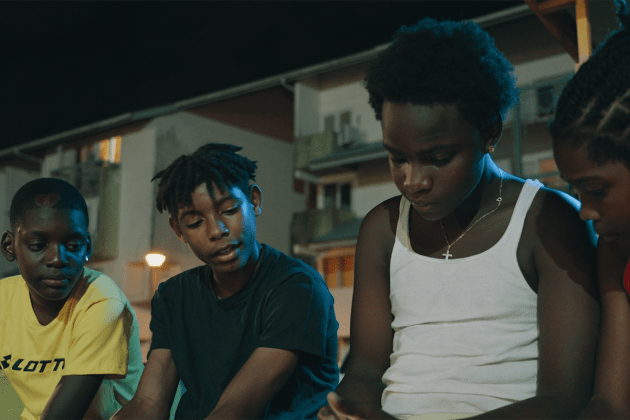Maxime Jean-Baptiste Bows Feature Debut ‘Listen to the Voices,’ About Grief, Forgiveness, the Persisting Consequences of Colonialism

French Guiana is, to put it mildly, rarely shown in cinema – perhaps we might see its beautiful landscapes, its jungle, its shoreline, maybe even its gold mines. These backdrops and adornments are those that Maxime Jean-Baptiste, director of “Listen to the Voices”(“Kouté vwa”)– showing in the Filmmakers of the Present section at the Locarno Film Festival and sold by MoreThan Films– wanted to avoid at all costs.
When asked by Variety about how he aimed to depict Guiana, Jean-Baptiste mentions, as a counter example, “Jean Galmot, Aventurier,” a French ‘70s adventure film, in which his father was an extra – something essential in his shorts “Nou Voix” (2018) and “Moune Ô” (2021). In fact, most of Jean-Baptiste’s work is a family matter – besides those titles, he co-directed “Listen to the Bear of Our Images” (2021) with Audrey Jean-Baptiste, his sister, who also co-wrote “Listen to the Voices.”
More from Variety
What makes “Listen to the Voices” a family matter is not only this collaboration, but the personal tragedy that set it in motion. The director’s cousin, Lucas Diomar, was brutally killed in 2012, plunging his family into an abyss of grief from which they have not yet emerged. 13-year old Melrick, Lucas’ nephew, is spending his summer vacation at his grandma’s place in French Guiana to get away from his “lame” life in Stains, Paris. While Nicole – Melrick’s attentive grandmother – seems to have found a way if not exactly to move on, then at least to find some acceptance, Yannick is deeply traumatized by having witnessed the death of his close friend first hand, and therefore “stuck in time,” Jean-Baptiste told Variety. Trying to capture these different stages of grief, the director wondered: “How could I make a film that might help to heal their wounds?”
The original title of the film – “Kouté vwa” is French créole for “Listen to the Voices” – succinctly sums up its poetic program: a polyphony of entangled testimony. Drawing on the deeply personal source of the story, the film summons these various voices and opens up a resonance chamber between them. To achieve that, the production team worked collaboratively. “I asked them: How do you want to see yourself represented? We took a lot of scenes out because they didn’t fit [with their ideas]; it was a collaborative process. It was very emotional for all of the three actors, because they are in different stages of grieving.” This group effort results in a compelling mix of documentary and fiction. Jean-Baptiste states that, paradoxically, “fiction actually created a distance that made it easier – for me, but also for the protagonists – to tell their stories.”
“Nicole, for instance, wasn’t at ease with the documentary mode of me asking questions… so Audrey and I re-wrote the script, and made it more akin to fiction.” However, Jean-Baptiste has not abandoned his documentary roots. The stirring opening of “Listen to the Voices” consists of slowed down TV coverage of a carnival dedicated to the memory of Lucas: “My previous films were composed of archival footage that I edited a lot,” he says. “I wanted to stick with this aesthetic and transfer it into a cinematic experience, but also merge it with a more natural approach.”
In possibly the most beautiful scene of the film, Nicole is seen driving down a highway with Melrick in the backseat. As the camera lingers on their faces, she recalls a surprise encounter with one of the men responsible for her son’s death. Propelled by pain and her desire for revenge, she was ready to attack the perpetrator, in an attempt to restore justice. Even if, in the end, she refrained from doing so, the anecdote nevertheless sheds light on the historical underpinnings of this violent act.
On a deeper layer, this story about grief and forgiveness also deals with the persisting consequences of colonialism: a violence that equally cannot pass. This aspect, while undeniable, is conveyed by Jean-Baptiste with considerable subtlety, as it does not come so naturally to the characters. “I wanted to let them use their own words. Because I have my own words: I will say that French overseas departments are colonies. And when I say that, some people agree, but other people don’t… For instance, Nicole won’t say that, and I have to accept that.”
Although “Listen to the Voices” was designed to help the characters through part of their grieving process, the grief does not vanish in the end – just like the colonial violence that is still very much present, and is at the core of interpersonal violence. This categorical ambiguity hints at the ambiguity of storytelling that the film proposes: “Neither can we know if Melrick will stay here or return to France, nor if the violence will happen again. We don’t know how Nicole will handle the future: she cannot hold the life of Melrick forever. At some point he will have to get by on his own.”
Best of Variety
Sign up for Variety’s Newsletter. For the latest news, follow us on Facebook, Twitter, and Instagram.
